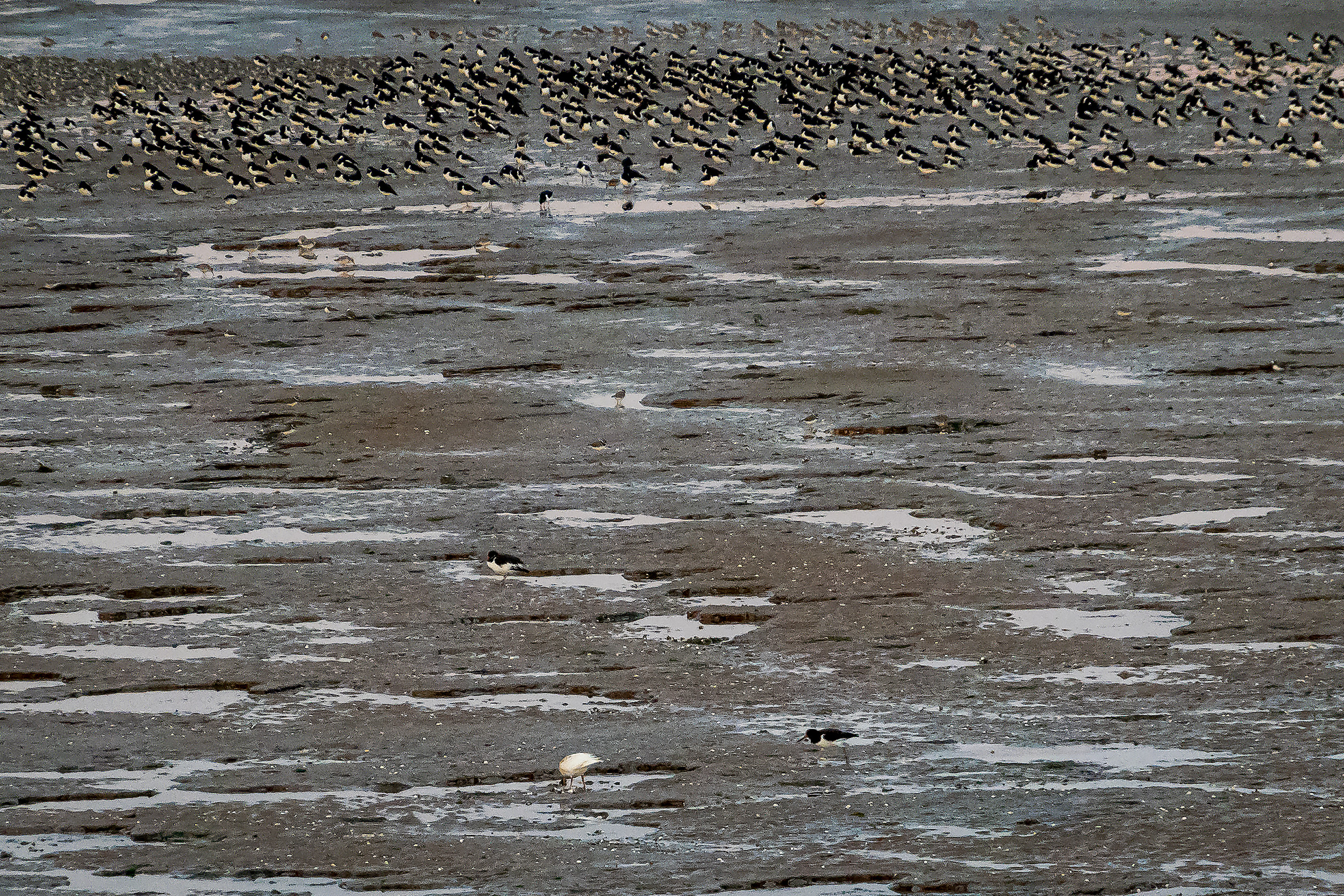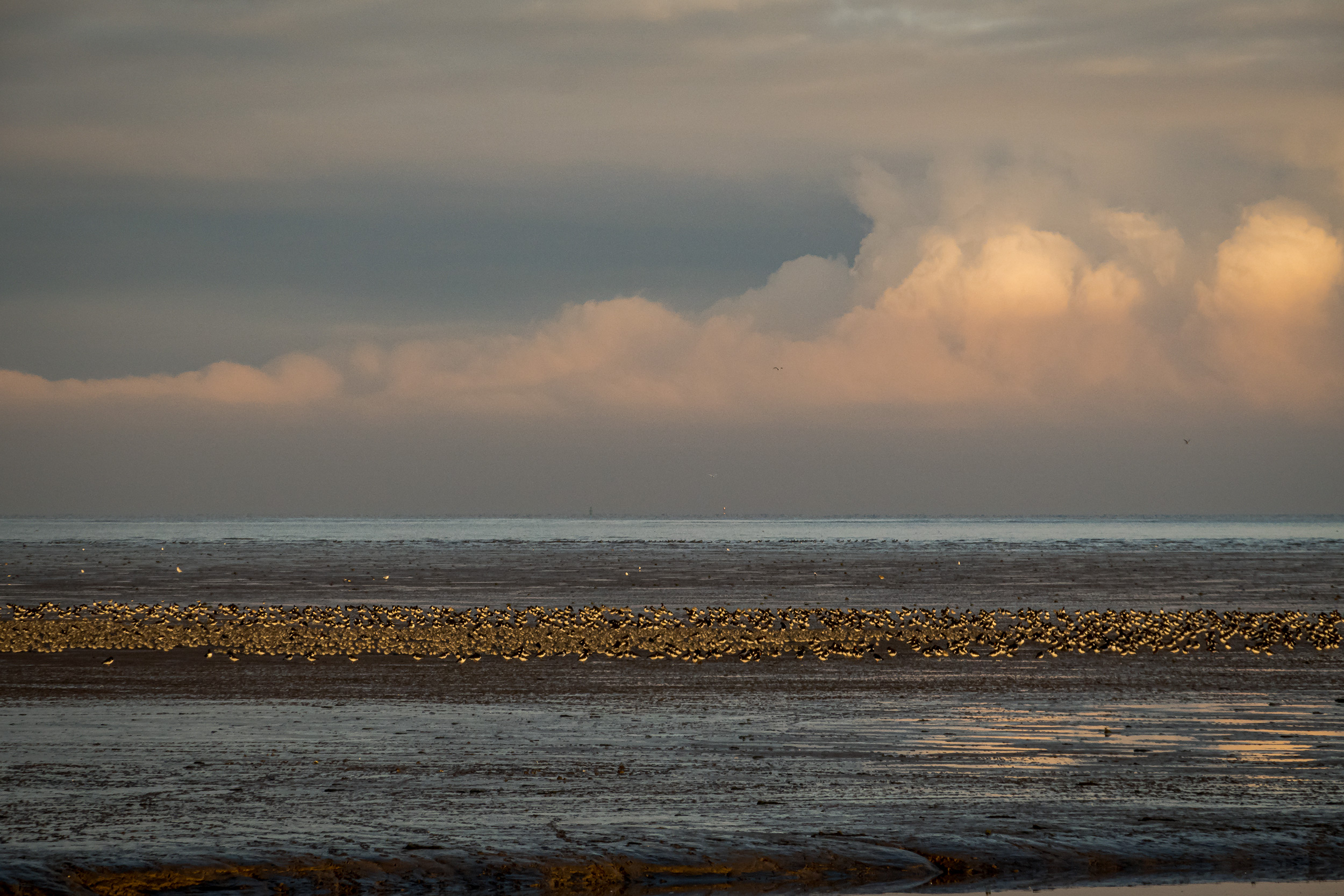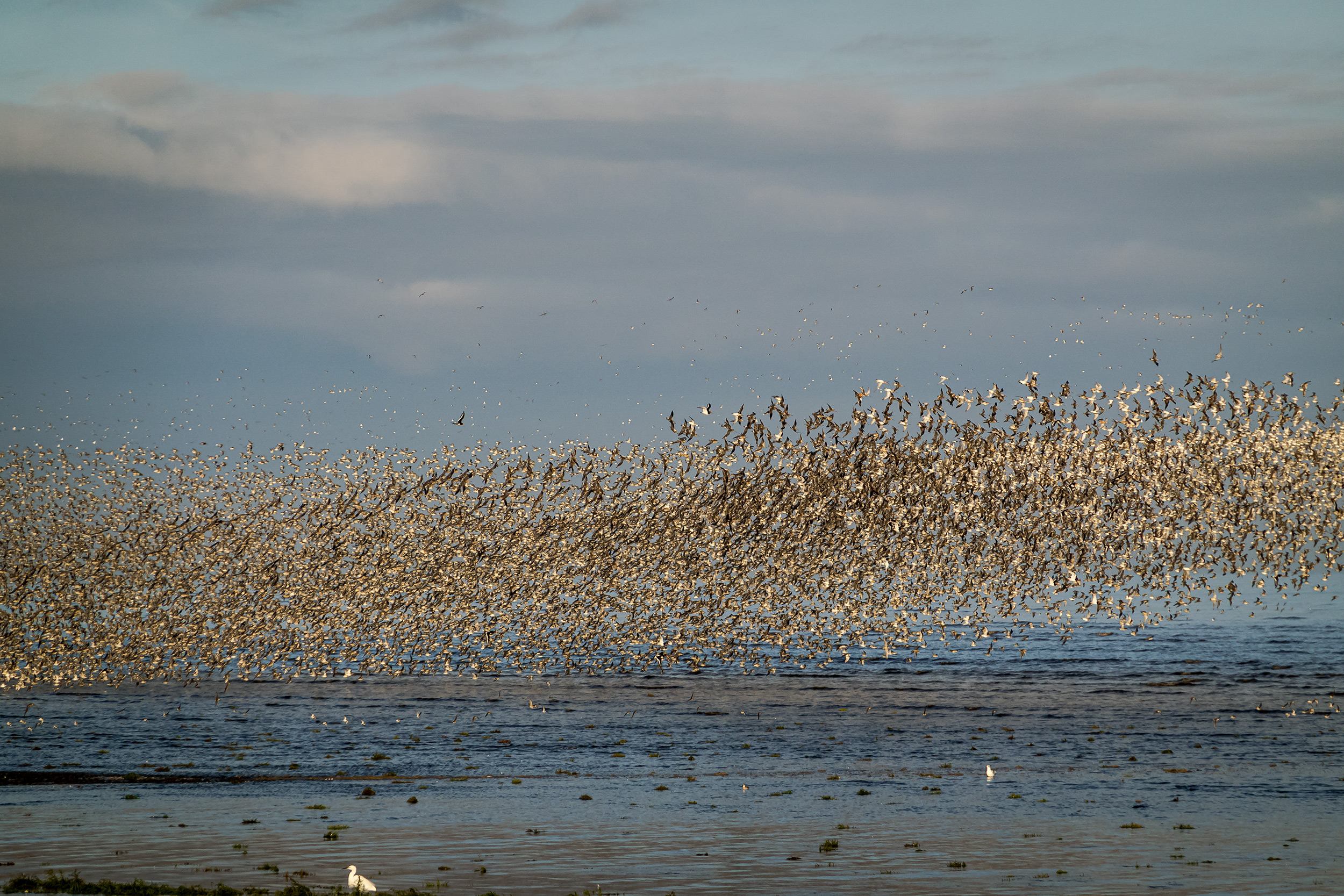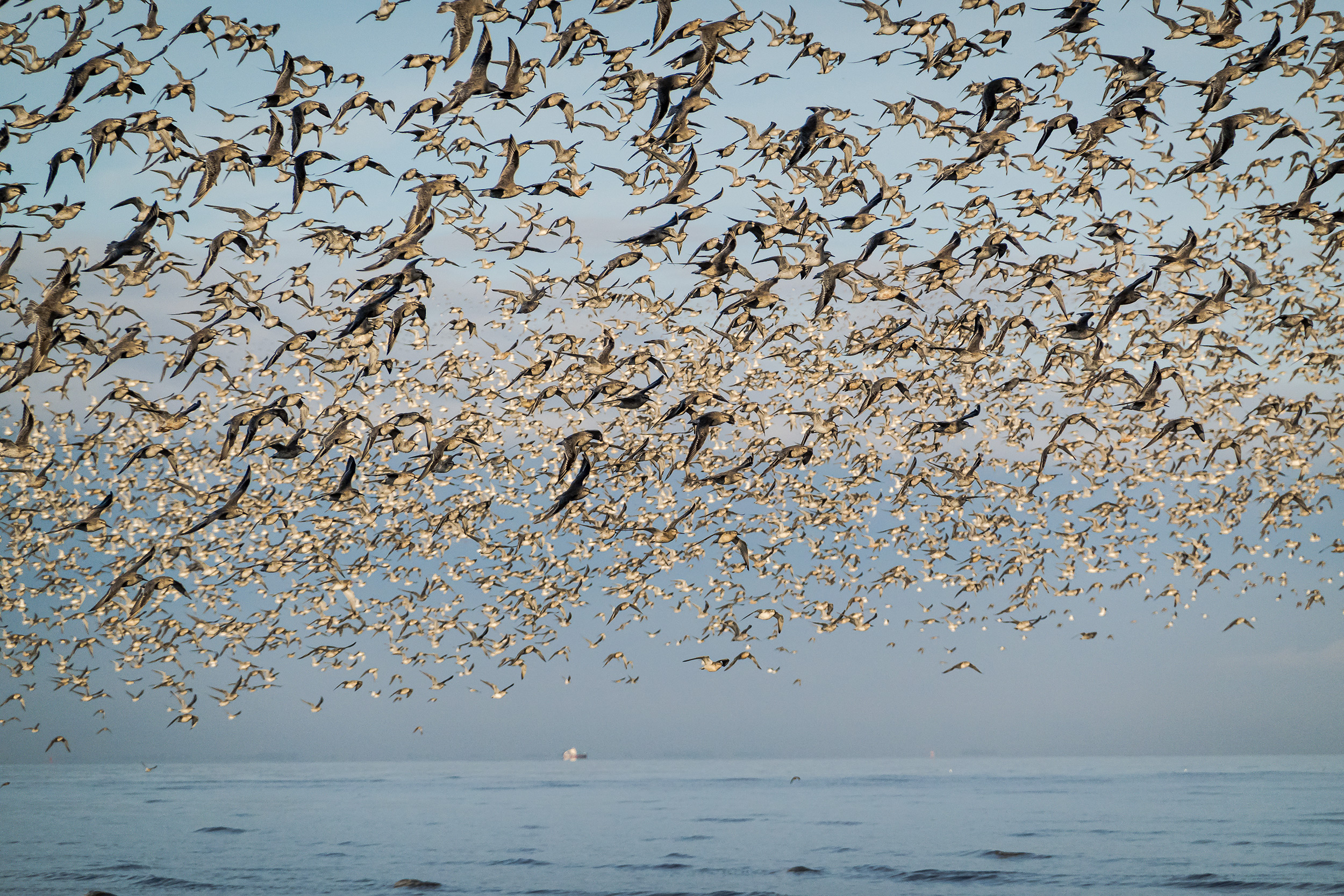Have you heard about the term ‘Spring tide‘? And today we had a ‘Spring tide‘… Spring tide in September? Yes, as this term refers to the term ‘springing forth‘ of the tide and not the season of spring.



It occurs every time at Full Moon when the Sun, the Moon, and the Earth and is in alignment. The gravitational pull of the Sun plus the gravitational pull of the Full Moon causes a higher than usual tide which is called ‘Spring tide‘. At the Snettisham RSPB Reserve in Norfolk, United Kingdom, the best Spring tides provide spectacular shorebird movements in the early hours of daylight. The Wash is an internationally important intertidal habitat for shorebirds throughout the year, especially during migration and winter. During the ‘King tides’, all feeding shorebirds are pushed off the mudflat and forced to fly to nearby roosting sites. The real spectacle happens when tens of thousands of shorebirds take off and perform an incredible murmuration over the spectators’ heads or right in front of them. These are one of the most mind-blowing natural phenomena that every birder has to add to their bucket list.





With an early morning departure, we managed to be at Snettisham Beach by sunrise in absolutely perfect weather. As the Sun broke through the clouds, all birds on the mudflat and the distant flying flocks were painted gold and silver. Red Knots looked like tiny sparkling diamonds in the sky. We only did very rough estimates and today wasn’t about counting waders. Rather witnessing the spectacle with naked eyes or binoculars.


As the Spring tide progressed, a hungry Peregrine Falcon stirred the pot by attacking a Dunlin. It caused a loud blast-off when all Red Knots flew high in the sky. This morning there was one less Dunlin in The Wash.







The spectacle is also not ideal to pick any rare birds from the crowd but I managed to find a Little Stint when flying overhead with a flock of Dunlin. We could spot a flyover Snow Bunting as well which we relocated at the beach on the way out of the reserve.

There won’t be any more observable spectacle this year as all upcoming Spring tides will happen during winter nights. Follow the relevant page of the RSPB website for more updates.
Thanks to my birding friend, Hasan for this incredible experience.


You gotta love shorebirds!
with love, artie
ps: we found a Bar-tailed Godwit at Fort DeSoto, FL last week. Photos and the whole story on my blog at http://www.BIRDSASART-BLOG dot COM.
I really do. It’s a life-long love. 🙂